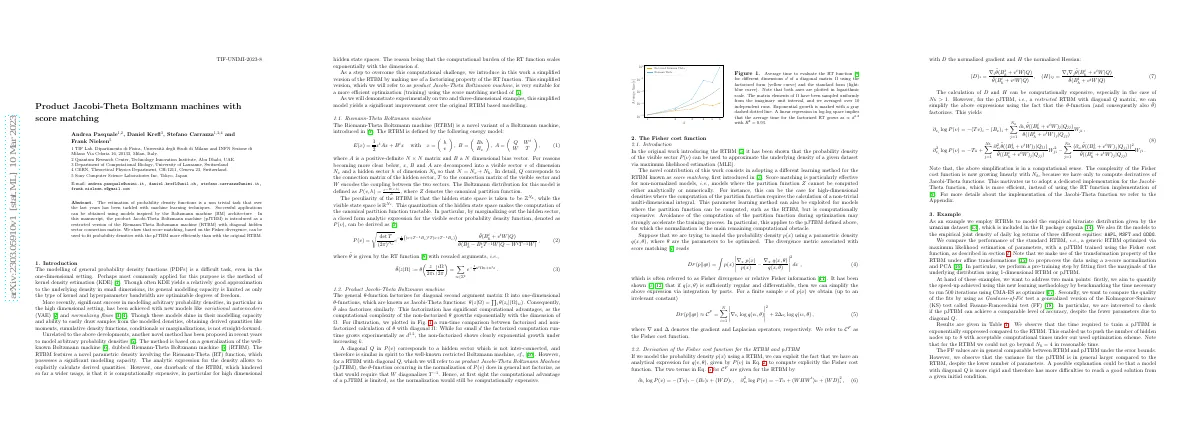Link to paper
The full paper is available here.
You can also find the paper on PapersWithCode here.
Abstract
- Estimation of probability density functions is a difficult task.
- Machine learning techniques have been used to tackle this task.
- Boltzmann machine (BM) architecture has been used for successful applications.
- Product Jacobi-Theta Boltzmann machine (pJTBM) is a restricted version of the Riemann-Theta Boltzmann machine (RTBM).
- Score matching, based on the Fisher divergence, can be used to fit probability densities with the pJTBM more efficiently than with the original RTBM.
Paper Content
Introduction
- Modelling general probability density functions is difficult
- Kernel density estimation is commonly used
- Variational autoencoders and normalizing flows have been successful in modelling arbitrary probability densities
- Riemann-Theta Boltzmann machine is a novel method for modelling arbitrary probability densities
- Product Jacobi-Theta Boltzmann machine is a simplified version of the RTBM which is more efficient
Riemann-theta boltzmann machine
- RTBM is a variant of a Boltzmann machine
- RTBM is defined by an energy model
- RTBM has a visible sector and a hidden sector
- Boltzmann distribution is defined for this model
- Hidden state space is taken to be ZNh
- Visible state space is RNv
- Closed form analytic expression for visible sector probability density function can be derived
Product jacobi-theta boltzmann machine
- θ-function factorizes for diagonal second argument matrix Ω
- Computational complexity of non-factorized θ grows exponentially with dimension of Ω
- Factorized computation runtime grows experimentally as d 1.2
- Non-factorized shows exponential growth under increasing k
- Similar to restricted Boltzmann machine
Derivation of the fisher cost function for the rtbm and pjtbm
- Modeling probability density using RTBM allows us to compute Fisher cost function.
- Calculating D and H can be computationally expensive.
- For pJTBM, complexity of Fisher cost function grows linearly with N h.
- Dedicated implementation of Jacobi-Theta function is more efficient.
Example
- RTBMs are used to model the uranium dataset
- pJTBM is compared to RTBM using Fisher cost function
- Data is preprocessed using z-score normalization and PCA
- Aim is to quantify speed-up and compare quality of fits
- Results show pJTBM is exponentially faster and has comparable FF values
- Variance for pJTBM is larger than RTBM
- Future work will investigate optimization on manifolds
